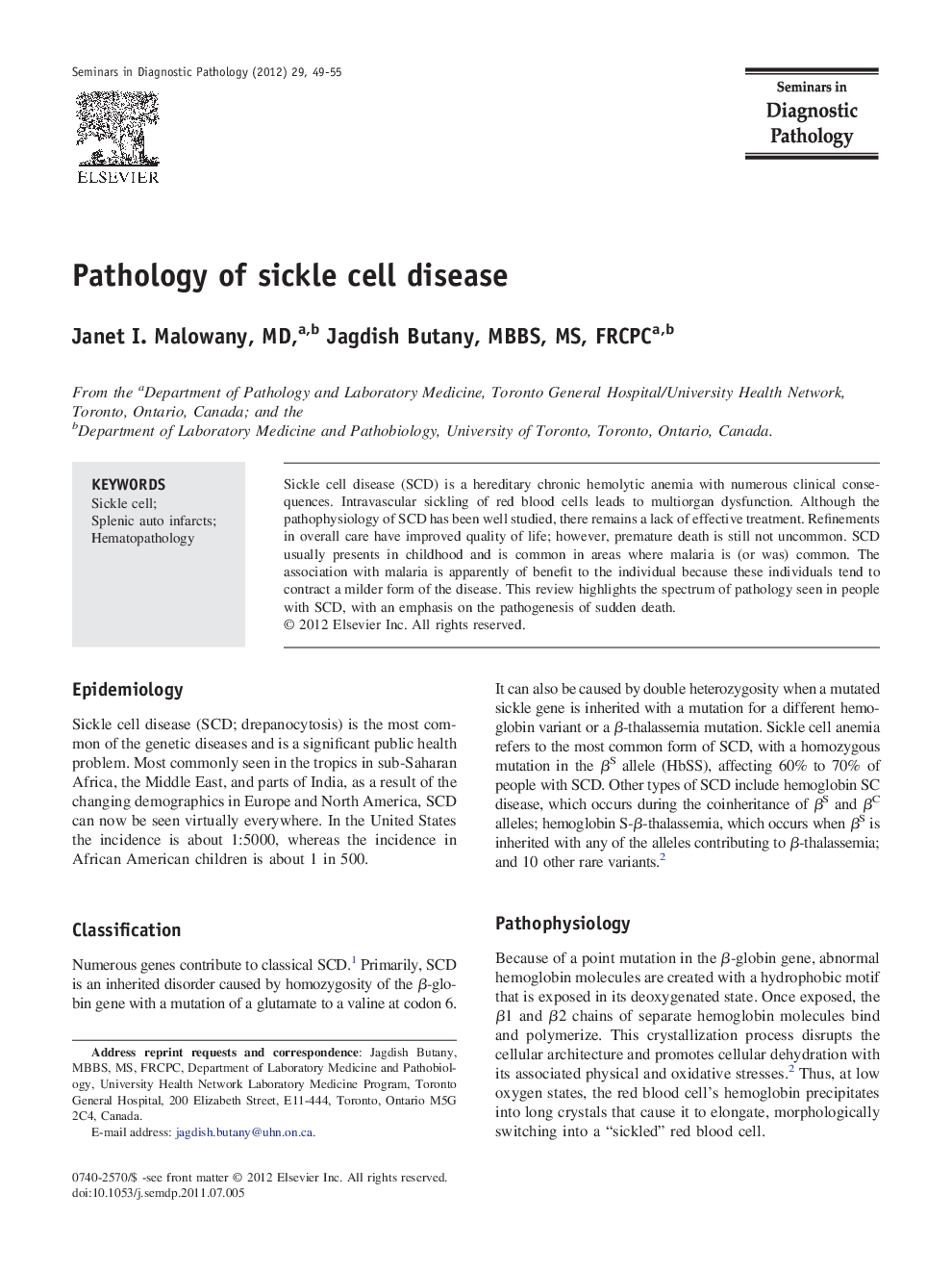| Article ID | Journal | Published Year | Pages | File Type |
|---|---|---|---|---|
| 4138432 | Seminars in Diagnostic Pathology | 2012 | 7 Pages |
Abstract
Sickle cell disease (SCD) is a hereditary chronic hemolytic anemia with numerous clinical consequences. Intravascular sickling of red blood cells leads to multiorgan dysfunction. Although the pathophysiology of SCD has been well studied, there remains a lack of effective treatment. Refinements in overall care have improved quality of life; however, premature death is still not uncommon. SCD usually presents in childhood and is common in areas where malaria is (or was) common. The association with malaria is apparently of benefit to the individual because these individuals tend to contract a milder form of the disease. This review highlights the spectrum of pathology seen in people with SCD, with an emphasis on the pathogenesis of sudden death.
Keywords
Related Topics
Health Sciences
Medicine and Dentistry
Pathology and Medical Technology
Authors
Janet I. MD, Jagdish MBBS, MS, FRCPC,
